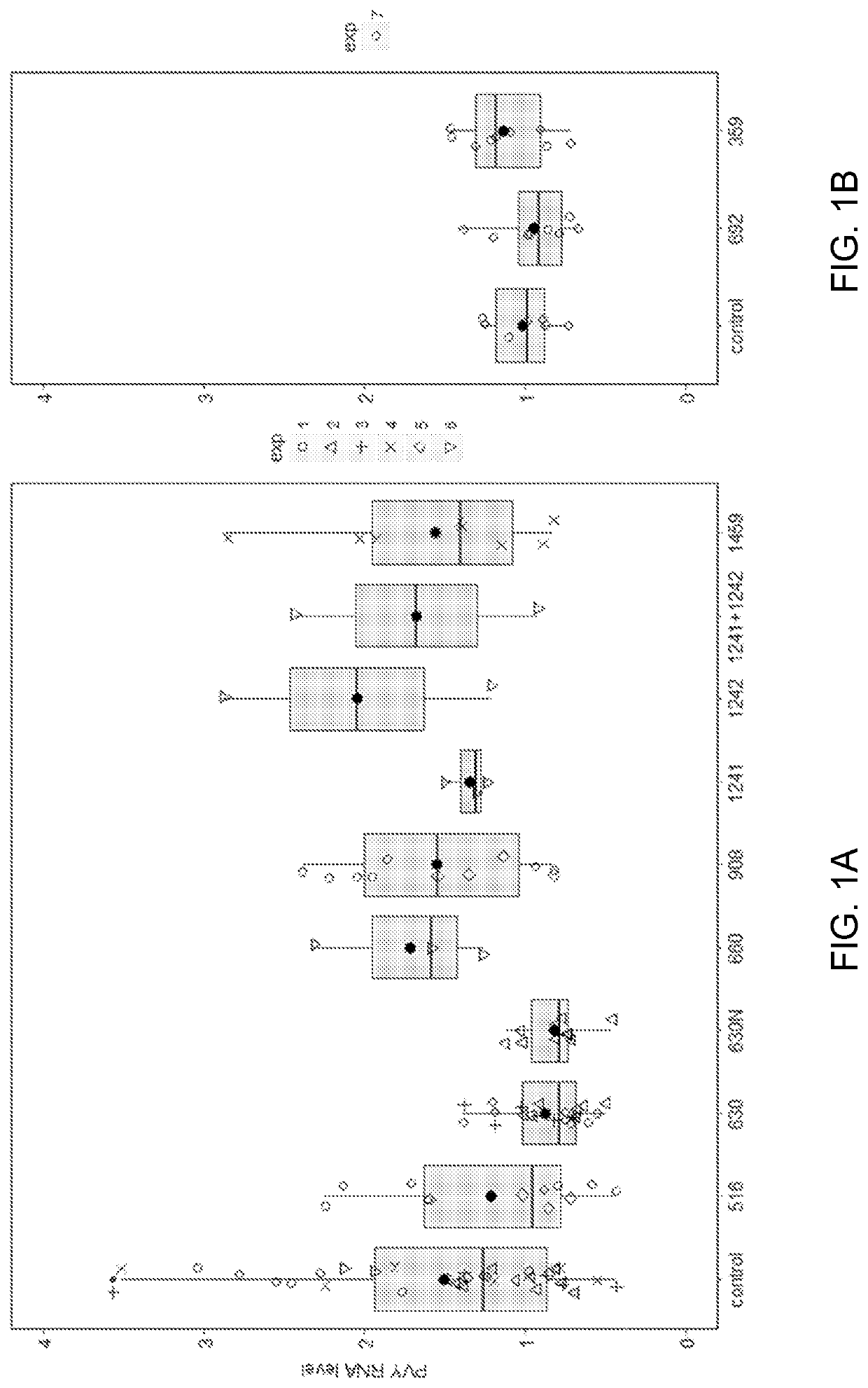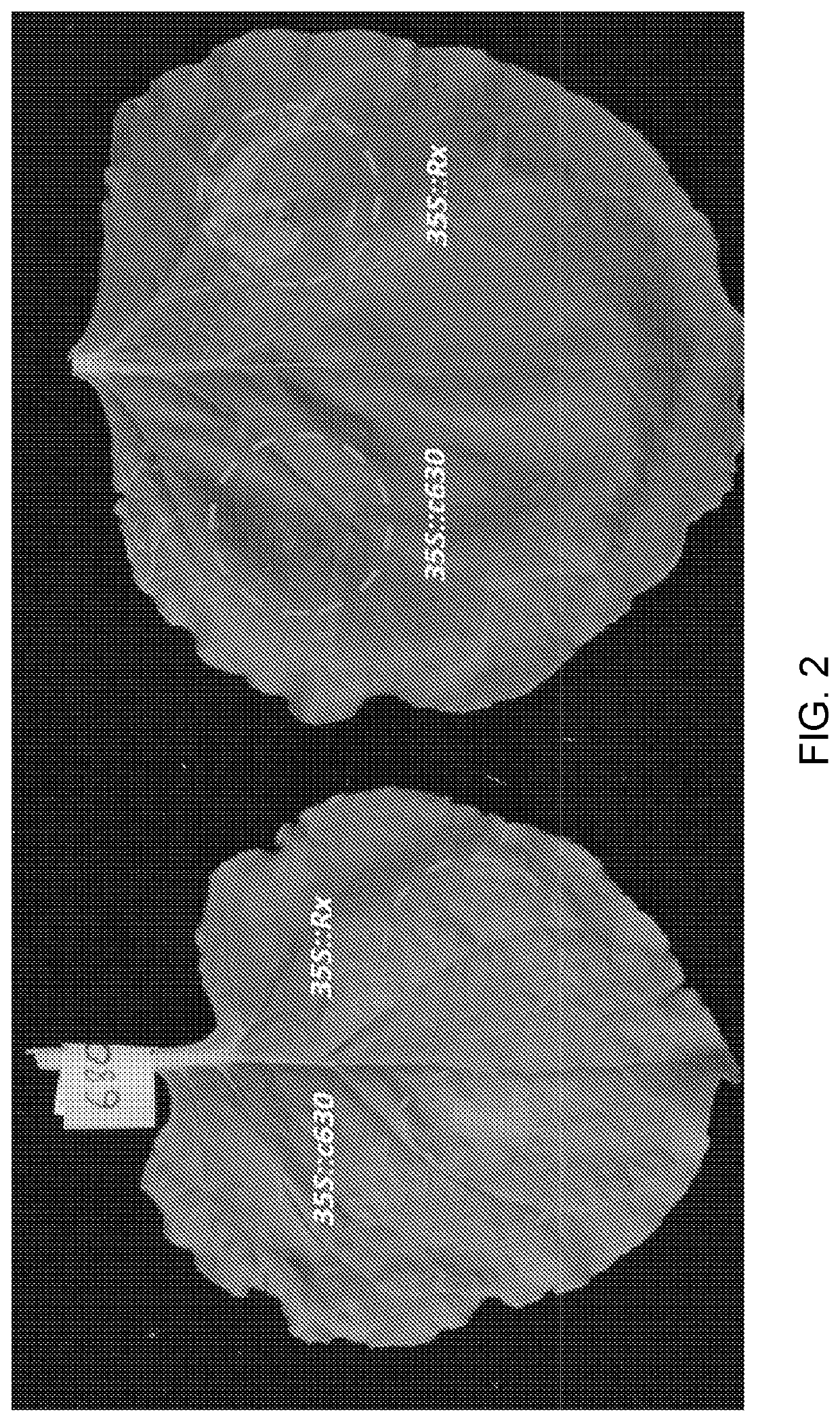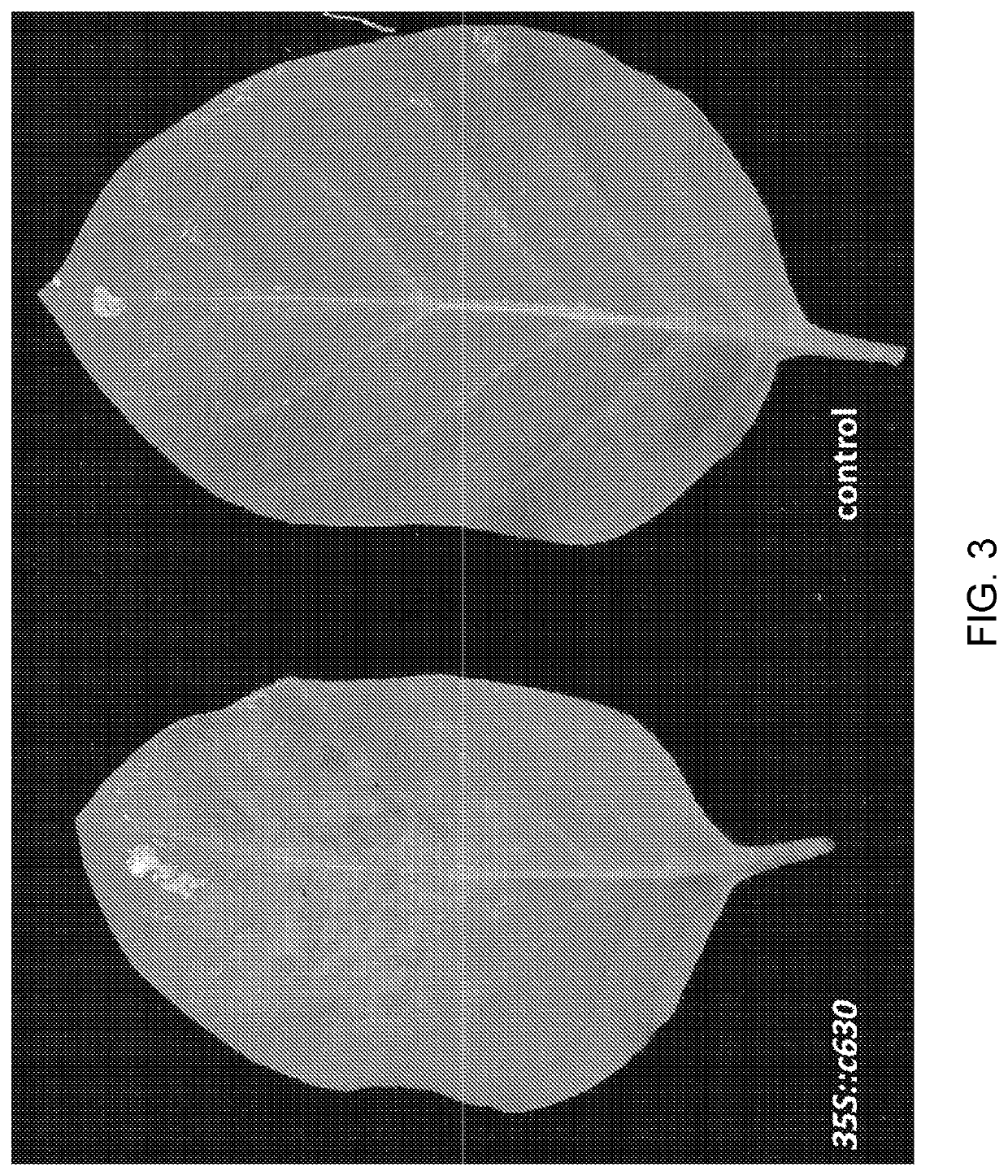Potyvirus resistance genes and methods of use
a technology of potyvirus and resistance genes, applied in the field of gene isolation and plant improvement, can solve the problems of ineffective hypersensitivity for restricting pvy in plants, inability to produce such new solanaceous crop plant varieties by traditional plant breeding methods, and no gene conferring effective hr or er-type resistance has been reported to have been cloned
- Summary
- Abstract
- Description
- Claims
- Application Information
AI Technical Summary
Benefits of technology
Problems solved by technology
Method used
Image
Examples
example 2
eq Combined with Bulked Segregant Analysis (BSA) RenSeq on 160 Susceptible Plants Yields 12 Candidate Genes
[0233]We hypothesized that the underlying PVY resistance genes encode a nucleotide binding-leucine rich repeat (NLR) protein. To predict candidate gene(s) for Rysto, we applied R gene enrichment and sequencing (RenSeq) combined with Illumina MiSeq 250 PE sequencing to 149 bulked susceptible plants from mapping population (BS), alongside with susceptible (S) and resistant (R) parent. RenSeq (Jupe et al. (2013) Plant J. 76:530-544) is a method which allows one to capture and sequence all NLR-type of resistance genes in plants. We employed an SMRT RenSeq, an improved version of RenSeq, that enables one to prepare long, enriched libraries that are suitable for using Pacific Biosciences Single-Molecule Real Time (SMRT) sequencing. Combined with bulked segregant analysis (Michelmore et al. (1991) PNAS 88:9828-9823) and long-read sequencing, like the PacBio platform (“SMRT RenSeq”) (W...
example 5
gnizes Multiple Strains of PVY
[0238]To test if c630 and c516 can recognize other strains of PVY virus, we infected N. benthamiana plants with PVY isolates 0, N, N-Wilga, NIB-NTN and unrelated viruses (PVX and TMV(U1)) as controls. Two weeks later, leaves showing symptoms of viral infection were infiltrated with Agrobacterium carrying candidate contigs c630, c516 and an empty plasmid. Whereas infiltration of c516 only resulted in a weak HR in plants carrying less aggressive PVY strains 0 and N, c630 infiltration resulted in a strong HR in plants carrying all PVY strains (but not control PVX or TMV) (Table 2). No cell death was observed when plants were infiltrated with Agrobacterium carrying an empty vector. These experiments further verified contigs c630 and c516 as candidates for the functional Rysto gene.
TABLE 2Strength* of HR After Agrobacterium Transient Deliveryof Various Constructs into N. benthamiana Plants Systemically Infected with PVY, PVX or TMV VirusesVirus35S::c51635S::...
example 10
goes Alternative Splicing
[0250]To annotate the coding sequence (CDS) of c630, we mapped RenSeq cDNA reads generated from R parent using TopHat (Trapnell et al. (2009) Bionformatics 25:1105-1111) with default settings. Mapping pattern suggests that the gene c630 undergoes alternative splicing and two splice forms differing at 3′ end can be distinguished. The dominant transcript variant consists of 4 exons (SEQ ID NO: 3) encoding 1,105 amino acids (SEQ ID NO: 2), and is supported by 78-87% cDNA reads. Remaining reads support the presence of an additional intron at 3′ end, starting 27 nucleotides (nt) upstream of STOP codon of splice variant 1, followed by additional exon encoding 162 amino acids (splice variant 2, SEQ ID NO: 5) resulting a total encoded protein length of 1,258 amino acids (SEQ ID NO: 4). The gene encoded by c630 has motifs and domains typical for TNL type of resistance gene; namely a TIR domain, followed by nucleotide binding (NB-ARC) domain and multiple leucine-reach...
PUM
| Property | Measurement | Unit |
|---|---|---|
| temperature | aaaaa | aaaaa |
| wavelength | aaaaa | aaaaa |
| resistance | aaaaa | aaaaa |
Abstract
Description
Claims
Application Information
 Login to View More
Login to View More - R&D
- Intellectual Property
- Life Sciences
- Materials
- Tech Scout
- Unparalleled Data Quality
- Higher Quality Content
- 60% Fewer Hallucinations
Browse by: Latest US Patents, China's latest patents, Technical Efficacy Thesaurus, Application Domain, Technology Topic, Popular Technical Reports.
© 2025 PatSnap. All rights reserved.Legal|Privacy policy|Modern Slavery Act Transparency Statement|Sitemap|About US| Contact US: help@patsnap.com



